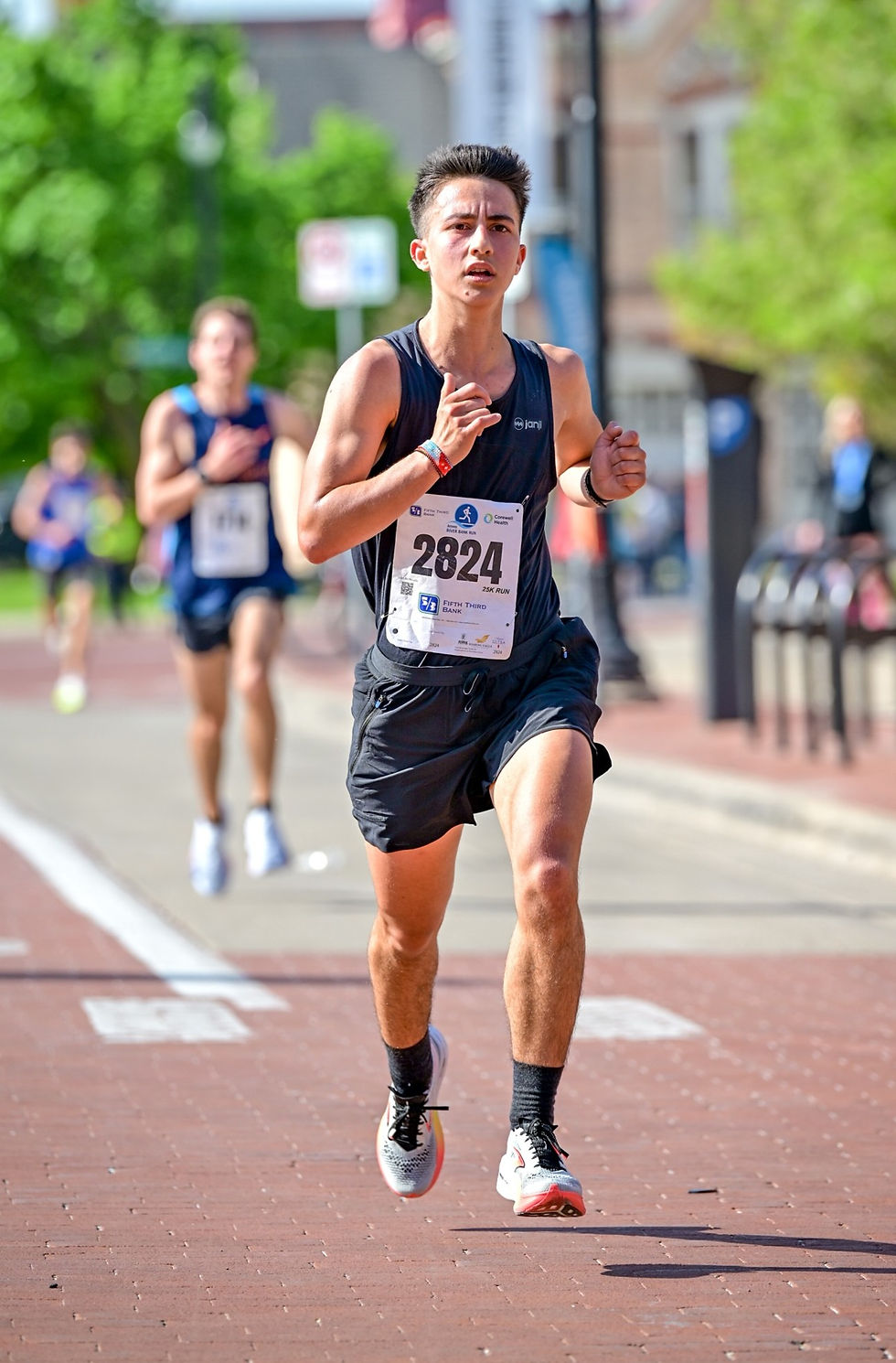Handcycles Join the Marathon Field
- charlie4243
- Sep 9
- 3 min read
Updated: Sep 10

When Quinn Brett rolled across the Medtronic Twin Cities Marathon finish line last year, she put herself into a rare, perhaps unique, category: she had finished her hometown marathon both as an able-bodied runner and as an athlete living with a disability.
She also helped pioneer a new Athletes with Disabilities category for Twin Cities In Motion and the marathon: handcycling.
“It had been 20 years since I had wandered the scenery of Minneapolis/St.Paul as a runner attending the University of Minnesota, so it brought back some great memories,” the 44-year-old New Hope native told The Connection.
“The race reminded me of how beautiful it is and fellow racers were all very kind and cheerful--- being a wheeler I am aware that others might not know why or what I am using ... essentially that my legs don't work and this is how I run now.”
In 2001 as a 20-year-old college student, Quinn ran the Twin Cities Marathon, her first 26.2 mile race, in 4:28:59. The race led to additional marathons, ultras, and triathlons, and helped launch Quinn's career as a mountain athlete.
Quinn ultimately became a climbing ranger at Rocky Mountain National Park where she leveraged teaching, emergency medicine, and search and rescue skills to educate, support, and, at times, save the lives of park visitors. In her free time she traveled the world on climbing expeditions, establishing new routes and speed records on mountains across the globe.
In 2017, however, Quinn fell while climbing El Capitan in Yosemite National Park, sustaining a severe spinal cord injury that took the use of her legs. If she was going to finish another marathon, it would be with her arms.
" ... being a wheeler I am aware that others might not know why or what I am using ... essentially that my legs don't work and this is how I run now.”
“Disability is nuanced,” Quinn noted. “I am lucky in that I have core muscles and fully functioning arms. Using my arms is difficult but some of my friends are not so lucky, their arms have less or no function. Their diaphragm and lung capacity is also diminished or paralyzed.”
Quinn’s arms powered her to a 3:14:43 finish in last year’s marathon, propelling an e-assisted handcycle from downtown Minneapolis to the State Capitol grounds in St. Paul.
“It meant a lot to me. To return to my home state, to be included in such a meaningful and formative event --- Twin Cities being my first ever marathon and a catalyst for a career as a professional mountain athlete,” Quinn acknowledged.
“They bring about the same emotions but perhaps in different ways,” she said of her two Twin Cities Marathons. “As a runner, I was always nervous and unsure if my legs, my body would be able to hold up, to finish. Now I wonder if I will have a flat tire or other mobility device equipment issue, on top of that making sure my arms can do that grueling climb to the capitol finish!”
As the development director for Unite 2 Fight Paralysis, handcycling the marathon wasn’t solely a personal triumph, but also a victory for inclusion.
“If you don’t see us, society assumes there’s nothing to fix,” she stressed. “Our presence here may look different—because it’s a first of its kind—but it means we are finally included.”
“At U2FP, our mission is to make that inclusion the norm,” she added. “Too many in our community are fighting just to stay alive, battling secondary complications that make advocacy nearly impossible. We need to be seen, and this injury needs to be understood, so research funding and innovation move faster.”

Quinn and fellow U2FP staffer Jason Stoffer made up the entirety of last year’s pilot handcycle program at the marathon. Based on the safe, successful addition of handcycles to the marathon mix, handcycles are one of the four recognized and supported Athletes with Disabilities categories at TCM, along with push-rim wheelchairs, duo teams, and guide-runners for the visually impaired.
Unite 2 Fight Paralysis plans to field 8 – 10 handcyclists at this year’s marathon. They also host a charity fundraising team for the marathon and the Medtronic TC 10 Mile, allowing all race participants to represent and support the organization.
“Your awareness, your voice, and your support can turn inclusion from a rare moment into everyday reality,” Quinn emphasized.
This article originally appeared in the TCM's weekly e-newsletter, The Connection. It's the fourth of four stories highlighting Athletes with Disabilities and the efforts Twin Cities In Motion takes to make its running events inclusive.
Subscribe to the Connection here.


